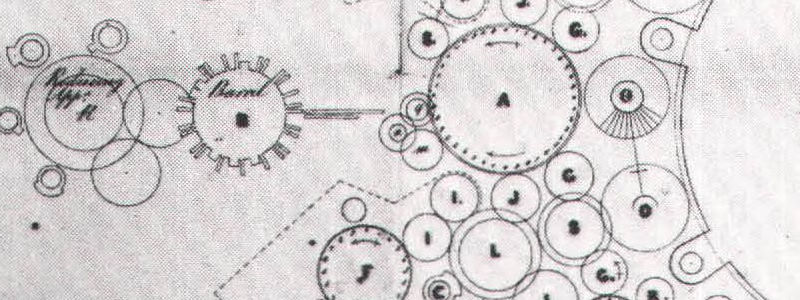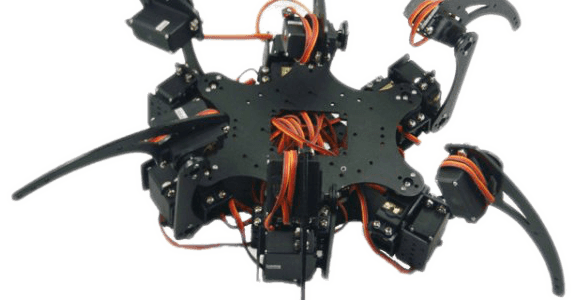Pei Wang’s Non-Axiomatic Reasoning System
Written by Pavol Durisek- Details
-
Category: Uncategorised
-
Published: 15 September 2013
-
Hits: 137569
NARS - Non-Axiomatic Reasoning System is an AGI (Artificial General Intelligence) system originated and developed by Dr. Pei Wang for more than three decades. Together with NAL (Non Axiomatic Logic), which is closely related to NARS and is also the mentioned author’s work, bring new perspectives into fields of computational theory and mathematical logic.
“In 1936, logician Alan Turing had formalized the powers (and limitations) of digital computers by giving a precise description of a class of devices (including an obedient human being) that could read, write, remember, and erase marks on an unbounded supply of tape. These “Turing machines” were able to translate, in both directions, between bits embodied as structure (in space) and bits encoded as sequences (in time). Turing then demonstrated the existence of a Universal Computing Machine that, given sufficient time, sufficient tape, and a precise description, could emulate the behavior of any other computing machine.
The results are independent of whether the instructions are executed by tennis balls or electrons, and whether the memory is stored in semiconductors or on paper tape.”
George Dyson, Turing's Cathedral: Origins of the Digital Universe
As the Turing machine became a formal model of any computing system, NARS main objective is to become a formal model of an AGI system, attempting to provide a unified theory, and system for AI as a whole.
Turing in his system was mostly concentrating on computability, leaving other aspects of the system behind. Author of the NARS, Pei Wang, clearly defines a term of intelligence, and what a system of a general intelligence truly means. NARS is a (General) Intelligent System, which regarding to author’s definition of intelligence, must be able to adapt to its environment and able to work with insufficient knowledge and resources.
“Despite the austere simplicity of Turing’s machines, they are capable of computing anything that any computer on the market can compute. Indeed, because they are abstract machines, with unlimited memory, they are capable of computations that no actual computer could perform in practice.”
B. Jack Copeland, The essential Turing
The restriction of using limited resources is already a part of NARS definition (AIKR - Assumption of Insufficient Knowledge and Resources). It not just brings the theory and implementation of the system closer together, but also brings together artificial and biological systems. Firstly, it is the restriction of having limited physical resources (in terms of time and memory) and secondly, limitation of information (amount and truthfulness) the system can perceive. AIKR doesn't really allows using a conventional (axiomatic) logic to build such a system, at least not in its conceptual level. Regarding to the inverse optics problem (which could be generalized to any type of perception, physical measurements, or perceived information), where is no way to track back the source of the information from received one by means of any logical transformation on it. There are many other phenomena, such as the decision problem (Entscheidungsproblem), where a first order logic statement, is not always (universally) provable by an axiomatic logic (a finite set of axioms), or the implication paradox, where using irrelevant data might be intuitively problematic, although it gives us correct results.
It clearly requires a different approach.
One could argue, the probability theory and statistical methodology like the Bayesian decision theory are the right tools. Although the Bayesian decision theory correctly and usefully describes the logical relationship among the factors that underlie any empirical approach to perception and cognition, it does not clarifies their principles and not every scientist are satisfied1,2 how it has been used.
“For most people using Bayesian decision theory, the visual system is taken to compute statistical inferences about possible physical states of the world based on prior knowledge acquired through experience with image features. The evidence in the preceding chapters, however, argues that the accumulated knowledge stored in brain circuitry is based on feedback from behavioral success, not image features. As a result, what we see is not the state of the world that most likely produced the image. On the contrary, the qualities we see define a subjective universe that comprises the various perceptual spaces described in preceding chapters. These perceptions successfully guide behavior not because they represent likely states of the world but because of the trial-and-error manner in which the relevant perceptual spaces and the underlying neural circuitry have been generated.”
Dale Purves, Brains. How they Seems To Work
1 Pei Wang - Issues in Applying Probability Theory to AGI
2 Dale Purves - Brains. How they Seems To Work, page 228.
A solution to describe such a system could be to build a knowledge base from the systems’ own experience instead of modeling a “real world” and reason using a non-axiomatic logic.
NARS is designed uniformly around one basic principle, but can describe any features and complexities of an intelligent system.
NARS can also reason about itself the same way as it does while interacts with the outside world.
My intention is to show the power of the NARS by implementing it in such a way that would be practically usable and could eventually replace other AI or non-AI systems or techniques overcoming their limitations and providing better results. Despite the fact, that NARS is still at its conceptual design stage and having some theoretical issues.
To get familiar with NARS I would recommend to read publications by the author Dr. Pei Wang and/or watch his videos. His website also provides two implementation of the system. One is written in Java - Open-NARS and the other in Prolog - NAL.pl. Both are available with source code, examples and detailed explanation.
I would also suggest to read his excelent books:
- Non-Axiomatic Logic: A Model of Intelligent Reasoning by Pei Wang (28 Jun 2013)
- Rigid Flexibility: The Logic of Intelligence (Applied Logic Series) by Pei Wang (23 Aug 2006)
, where you can find a lots of extra information and much more detailed explanations, also focusing more on the control part of the system, mathematical proves of his theorems and future plans (E.g. self-reasoning - NAL-9) – which are not contained on his website, at least not in such content.
Many ideas presented in this websites are a direct or indirect citation of the author of the original work Dr. Pei Wang.




